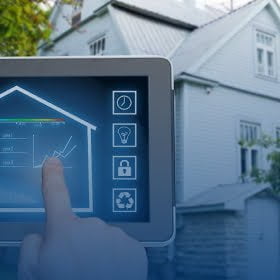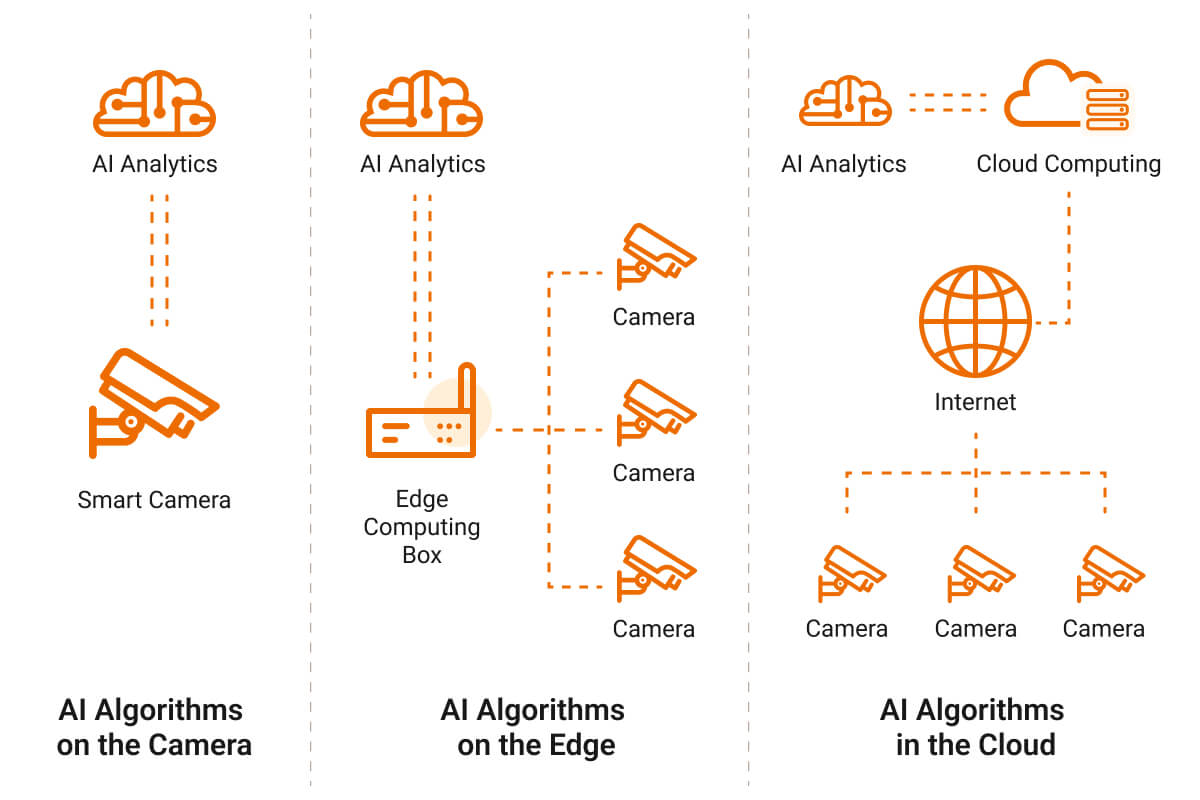Since the Dutch introduced the digital meter, P1 has become a popular term, especially with the increasing adoption of renewable energy sources and smart home concepts. The popularity of this term is attributed to P1 listening devices, such as the P1 monitor and gateway.
We want to look at the functional part behind this technology (P1 protocol) to understand how it works, its listening devices, its benefits, and the information transmitted through the P1 port. Let’s get right into it!
What Is the P1 Protocol?
P1 is a protocol or set of rules that govern the communication between digital energy meters and the data collection/aggregation points, which include devices like IoT gateways and P1 monitors.
This protocol got its name from the physical P1 port that it uses, which requires an RJ12 connector. It was created in ASCII based on the Dutch Norm (NEN) IEC 62056-21 (Direct local Data exchange for meter reading, tariff, and load control) Mode D.
The Dutch government instituted the protocol as a standard for energy meters to enable users to access and see their power consumption data. Some utility companies have adopted this protocol in smart gas and water meters.
How the P1 Protocol Communicates
This protocol allows communication to take place in structured, half-duplex telegrams that have a start bit, eight data bits, zero parity bits, and one stop bit. The data block in the communication protocol has a specific structure with these components in the specified order.
- Forward slash
- 3-digit model-specific identifier
- 5
- 3-digit device ID
- Two carriage return and line feed ASCII characters
- Data
- Exclamation mark
- CRC (Cyclic Redundancy Check) code
- Carriage return and line feed ASCII characters

This data block is forwarded to the P1 port and out to the collection/aggregation point at 10-second intervals in smart electricity meters and hourly in smart gas meters.
To read this data, the P1 listening device needs to have the necessary software to interpret the block and derive meaningful information from it.
Data Provided By the Smart Meter Over the P1 Port
Some of the data smart meters send out in these data block formats over the P1 port include:
Consumption Data
The P1 consumer serial port gives users access to current meter readings in real-time, as well as the aggregated consumption data for specific periods. This data can be about power, water, or gas usage.
Power Quality
Power quality primarily depends on the voltage level, and the P1 provides voltage information to help utility companies rectify the issue. The port can also provide outage information without users having to report the issue.
Meter Readings
Utility companies need meter readings to bill customers, and P1 ports provide this data at the click of a button. It is also possible to automate the billing process by capturing the meter reading on a specific day and time of the month to generate the bill.
P1 Protocol Listening Devices
These devices can read, interpret, and display the data transmitted by a digital meter via the P1 port using the P1 protocol.
They are important in the smart home environment because smart digital meters do not store gas, electricity, or water measurements, but listening devices can.
But more importantly, listening devices present the data in a useful way to users to help them optimize consumption, eliminate wastage, and reduce bills. The energy consumption data provided by utility companies via their websites is not detailed enough for users to learn about their consumption dynamics and identify ways to save energy.
Some of the listening devices include:
P1 Monitor
These listening devices collect and display data from the digital meter in a user-friendly manner, which can be in a mobile app or webpage. This data is updated in real-time to enable consumers to track consumption, analyze it, and monitor the changes that occur over time.
Data Logger
Data loggers monitor and record the data streaming in from the P1 port, which you can then download into a computer that has the analysis software to derive meaningful information. They have the decoding software for unwrapping the P1 data blocks and a database for storing the raw data.
IoT Gateway
IoT gateways are the holy grail of P1 listening devices because they house edge processing capabilities and can connect to the cloud for more detailed analysis before presenting the information to the user.
If the gateway has a P1 port, you can interface it directly with the meter, which will require cabling between the two devices. An easier way to go about it is to use a ZigBee interface that hooks up and draws power from the meter using an RJ12 connector cable. This interface then connects to the gateway wirelessly via ZigBee to send the data.
Some of the IoT gateways you can use for this smart home/meter application include the DSGW-210 edge computing gateway, which houses enough memory and processing power to run the software to decode the P1 protocol data blocks. This hub is also compatible with mainstream network/cloud platforms like AWS and Thingsboard, which will provide the analysis backend that presents information to the user.
Edge processing is important in smart metering systems because you can use software to filter and aggregate the data before transmitting it into the cloud. This reduces the volume of data being sent out.
For smart metering in industrial applications, the DSGW-081 industrial edge computing gateway is more suitable for the task because it features Modbus. You can use this wired connection to control and manage devices on the factory floor based on the power consumption data, then observe if the consumption figures reduce in real time. This setup will enable better decision-making.
Benefits of Smart Meter P1 Connectivity
Remote Smart Meter Access
Using an IoT gateway P1 listener allows remote smart meter access via mobile apps or online portals, and this is beneficial to users because it enables them to monitor and manage power consumption even when away from home.
Real-Time Monitoring
Whether monitoring the smart meter remotely or at home, P1 connectivity gives customers real-time consumption data. This allows them to make adjustments immediately to conserve energy and lower costs.
Integration With Smart Home Devices
Smart home solutions incorporate all smart devices, and introducing the smart meter via the P1 port into the mix brings several power-saving benefits.
For instance, you can program the gateway to turn off non-essential, power-hungry devices during peak hours or when the consumption data indicates usage is too high and will balloon the bill.
Power utility companies usually charge the highest rates during peak hours, and you can automate the solution to turn off non-essential electrical devices when the power cost is the most expensive. The gateway can then turn on these devices during off-peak hours.
If you have a solar installation, you can optimize the net metering system to allow more solar energy from the batteries to run the house when utility power is the most expensive. During off-peak hours, the system switches to more utility power and stores solar energy or even recharges the batteries using the grid.
Since the P1 port also sends power-quality data, you can program the gateway to turn off sensitive appliances when the voltage fluctuates.
Cost Savings
Understanding the energy and water consumption metrics enables customers to reduce/optimize consumption and eliminate wastage, resulting in lower bills.
Billing Accuracy
Utility companies also use the P1 port to get meter readings for precise billing, doing away with estimates or predictions that can be contentious with customers.
Better Management of Outages
Utility companies can also get immediate notifications or reports from the P1 port if the power goes out or the quality (voltage) is substandard. This enables faster reaction times to restore the service.
Lower Operational Expenses
By eliminating manual meter readings, utility companies reduce the number of service calls to customers, which results in lower operational expenses and better efficiency.
Better Customer Experience
Customers like to be involved in the technical details of the products they use. Giving them access to power, gas, and water consumption data makes them feel more in control over the efficiency optimization procedures in their homes, resulting in a better customer experience. Additionally, they will be able to predict the billing charges and understand why the cost is high or low.
Conclusion
The P1 protocol has revolutionized smart metering, and IoT gateways can capitalize on the data coming out of this port to make the smart home experience richer. But you need to use the right hub and applications for this project to make it valuable to the end user.
We can help you get the right hardware and software for this solution, using ready-made programmable gateways like the DSGW-210 edge computing hub, which are compatible with applications and cloud platforms like:
- Home Assistant
- openHAB
- Amazon Alexa
- Azure
- AWS
These gateways have an open API that you can use to dock various systems and platforms to customize your smart metering and smart home solution.
Alternatively, you can build a custom IoT smart home gateway using our ODM service to suit your project requirements. At Dusun, we have the experience, expertise, and equipment to develop high-quality hardware that meets the required international certifications and standards.
Want to check out our latest offers? Contact us today for more details.



















